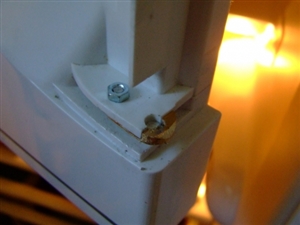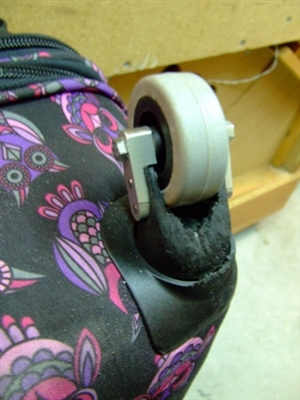To start thing off I have attached a couple of pictures of recent repairs I have made. Did it make sense to make these repairs? I think so.


Best regards
Roger
Andy Millar:
At the other extreme, many years ago I used to have a friend who would "mend" incandescant light bulbs - by twirling them them around with a particular wrist flick action which would cause the free end of the coil to wrap itself around the end it had broken off.
. . .
I once "repaired" a tungsten light bulb like this. It had failed prematurely, having being dropped, which broke the filament. I manipulated it to join the broken ends and it lasted for quite a while.
I found this did not work with bulbs that had run their normal life. I could sometimes rejoin the filament ends and get them to work again but they would last only a short time so not really worth it. And of course sometimes when the lamp "blows", the filament disintegrates so there are no free ends that can be joined.
COULD I DO SOMETHING LIKE THIS NOWADAYS?
Not really. There are very few filament bulbs remaining in our household - all in places where they are seldom used, e.g. the loft. It would not be worthwhile to try to repair them, considering their low luminous efficiency. As for compact source fluorescent lamps and LED lamps, I doubt whether I could use gravity to repair these. It is not as though they are as expensive as they used to be.
Andy Millar:
At the other extreme, many years ago I used to have a friend who would "mend" incandescant light bulbs - by twirling them them around with a particular wrist flick action which would cause the free end of the coil to wrap itself around the end it had broken off.
. . .
I once "repaired" a tungsten light bulb like this. It had failed prematurely, having being dropped, which broke the filament. I manipulated it to join the broken ends and it lasted for quite a while.
I found this did not work with bulbs that had run their normal life. I could sometimes rejoin the filament ends and get them to work again but they would last only a short time so not really worth it. And of course sometimes when the lamp "blows", the filament disintegrates so there are no free ends that can be joined.
COULD I DO SOMETHING LIKE THIS NOWADAYS?
Not really. There are very few filament bulbs remaining in our household - all in places where they are seldom used, e.g. the loft. It would not be worthwhile to try to repair them, considering their low luminous efficiency. As for compact source fluorescent lamps and LED lamps, I doubt whether I could use gravity to repair these. It is not as though they are as expensive as they used to be.
We're about to take you to the IET registration website. Don't worry though, you'll be sent straight back to the community after completing the registration.
Continue to the IET registration site